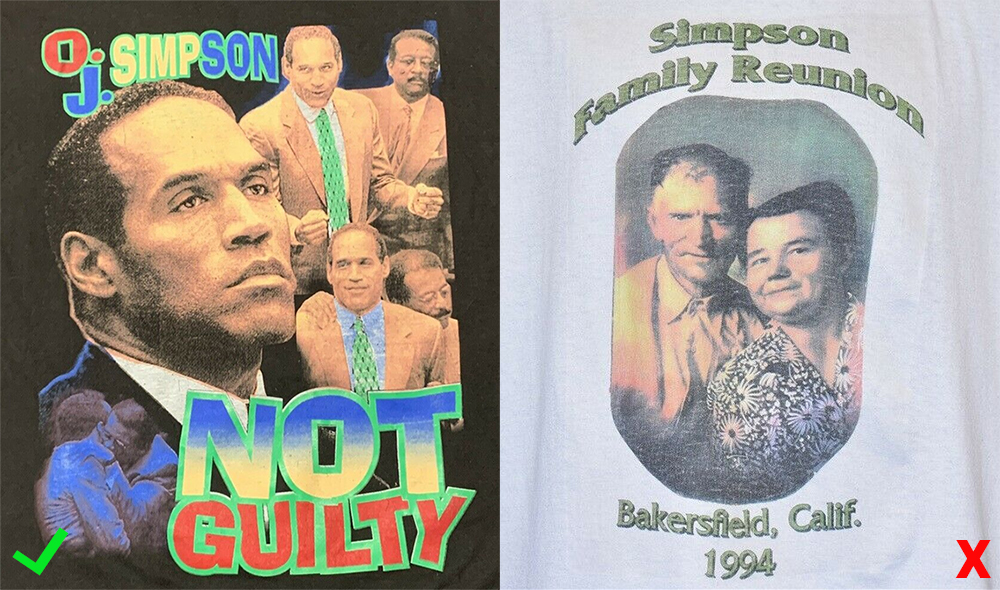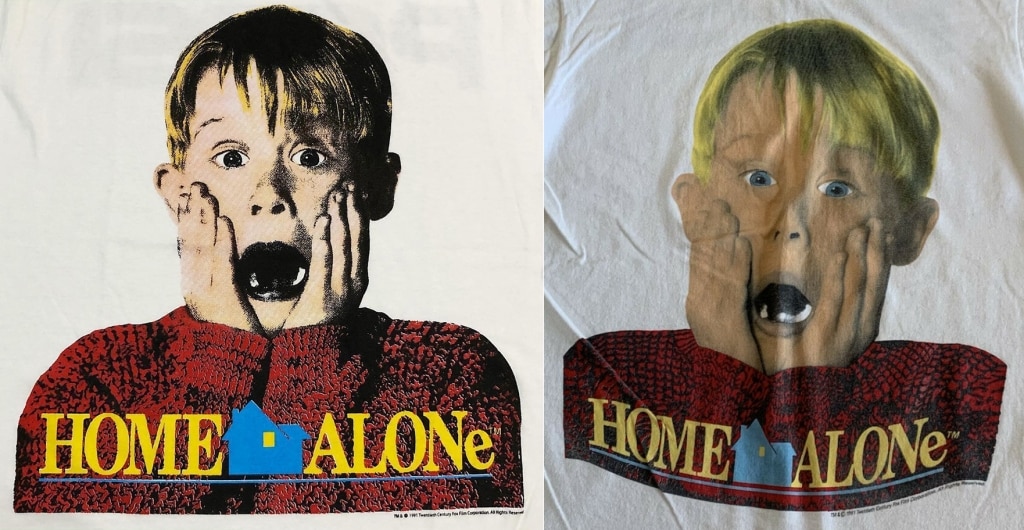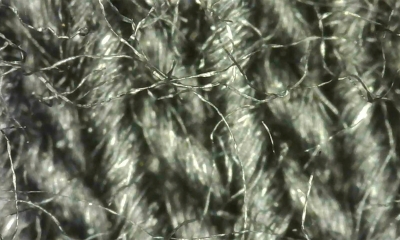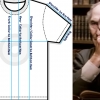How To
The Ultimate Guide to Vintage T-Shirt Authentication
For over 15 years Defunkd has been devoted to powering up the community’s authentication knowledge to collectively stamp out fakes. Having said that, we’re not divulging every single method we use or what equipment we use. Yes, we’re gatekeeping certain authentication techniques – but we’re doing so to stay several steps ahead of counterfeiters who will inevitably read this. That said, sometimes you may need to use an expert vintage t-shirt authenticator, to get the answers you need, but this guide will give you a great skill set in authentication techniques.
The History of counterfeit vintage t-shirts
When the vintage t-shirt goldrush from the early aughts started turning heads online, it also ushered in the first era of counterfeit vintage t-shirts. By 2007 it was a serious problem on eBay. At one point there was a screen printing operation based in California churning out thousands of fakes that were being sold via a never-ending array of auctions and second-chance offers. Keep in mind, in 2007 eBay auctions were still popular, and there was as much excitement surrounding them as there currently is for live auctions on Instagram.
This Cali op was pulling in big bucks, they had a large inventory of designs, and we’re constantly adding to it. They were basically printing money. All of the honest vendors were taking a hit to sales because massive amounts of buyers intending to purchase true vintage were getting duped. Sadly, eBay was extremely slow to respond to it, we even ran an experiment to show how slow they were to react – even when being repeatedly alerted to it.
That fiasco and other fraudulent tee trends are how the Defunkd forum was born. The community united and started to monitor, disrupt and expose dodgy accounts. We also began to openly discuss authenticity by having members post questionable shirts for an authenticity check. We’ve been doing this since 2010, so if you’re looking for proven methods, you’ve come to the right place.
What does it mean to authenticate a vintage t-shirt?
Authenticating a vintage t-shirt means we’re analyzing a tee to determine if it’s actually from the era it purports to be. It doesn’t have too much to do with whether or not the shirt is licensed, as bootlegs can be vintage too. Strangely there are even modern fakes of vintage bootlegs.
But before you even begin this process, first things first…
Is Your T-Shirt Even Worth Counterfeiting?

eBay/shirts4days/thecaptainsvintage
Is there enough of a market to justify making a counterfeit of a particular t-shirt? Counterfeiters follow the money, they aren’t interested in making copies of shirts that don’t have a return on investment. Mids don’t typically cut it, counterfeiters will target higher-end vintage t-shirts. It’s an expensive and time-consuming process to go through all the trouble to copy a t-shirt design, and then make a product – so it has to be worth the investment.
Over the years we’ve fielded numerous legit checks where it’s a completely random print, like a local business or an obscure product. You don’t have to worry about a “Simpson Family Reunion 1994” t-shirt. No counterfeiters are hard at work trying to make money from the Simpson fam jam.
An O.J. Simpson rap tee design, however, has tons of potential.
So please, before you go through the remaining steps, save yourself the trouble if the shirt has little value.
Are there known forgeries of this print in circulation?
You should be keeping an eye on emerging vintage t-shirt sales trends as much as possible because counterfeiters definitely are. They want to be quick to turn new prints around to ensure they can leverage their efforts as much as possible. And if you’re aware a t-shirt is selling for big bucks, it’s time to pay especially close attention to the details because if counterfeiters haven’t churned one out yet, rest assured, they’re working on it. Once you’ve spotted a forgery in the wild, be additionally vigilant, chances are they’ll be more than one counterfeiter trying to cash in – so don’t assume the red flags you’ve discovered on one fake will be present on others.
Techniques Used by T-Shirt Counterfeiters
New screenprint on a genuine vintage blank t-shirt

photo credit: shane/undershirtguy.com
This is perhaps the most convincing technique because counterfeiters use actual vintage deadstock blanks with well-known tags. Usually, they’re forced to copy the image from a vintage t-shirt – then graphically separate the colors into screens while trying hard not to lose details along the way. They’re basically reverse-engineering the print, which isn’t easy to do when you’re taking it from a t-shirt. But if they decide to target a one-color print – and do a decent job, it can be really difficult to identify it as being fake.
Best way to authenticate: Since the shirt and tag are legit vintage – all you have left is the print. Do a print analysis.
DTG Print on a used blank 100% cotton t-shirt
This can be a pretty convincing combo in certain scenarios. In recent years Direct to Garment has drastically improved, but the prints still haven’t achieved the full vibrancy of screenprints as some of ink gets absorbed in the cotton rather than sitting on top of it. That’s why a white shirt as a base color used to be the recommendation. That said, we recently put modern DTG tech to the test and had in-house Defunkd t-shirts printed on black t-shirts using DTG – and the results were fantastic and scary.
But sometimes the lack of details on a DTG print can work to the forgery’s favor because it can appear slightly faded and washed out, which is a killer combo for simple one or two-color prints from the 1970s and 80s. The counterfeiters will usually find used vintage blank tees, so they can be convincing AF, because the buyer sees an old shirt, with a faded print which both help to legitimize it.
Best way to authenticate: run your fingers over the top of the print and see if it’s raised. If you close your eyes and can’t determine where the print stops and starts, it could be a DTG print. But also keep in mind that some modern DTG prints are quite thick and this test no longer applies. Plus, some older, washed-out screen-printed shirts can have a very subtle presence of ink. DTG prints also tend to be a tad more visible on the inside of the shirt if you turn it inside out. Another test we performed in the earlier days of DTG – when they were usually only printed on white tees – we put a tiny dab of bleach directly on the print to see what effect it would have. A screenprint will not be affected by the bleach, while the old DTG prints were exposed immediately.
We authored a guide on this back in 2007, check out our DTG demonstration. Keep in mind, things have changed drastically, so it currently has limited use. We are currently investigating what effect bleach has on modern DTG inks.
So the best way to authenticate? Do a print analysis.
New screenprint on a counterfeit vintage blank t-shirt
Fraudsters are now mass-printing blanks with fake vintage tags. But, now they have two things to copy and try to pull off accurately. Fake tags are not easy to do, but in the last 5 years, they have become more convincing.
Best way to authenticate: Analyze the tag or just do a print analysis.
New screenprint on a new shirt with no tag
In this instance, the counterfeiter will find modern blanks and then remove the tag, so the buyer doesn’t know it’s a modern-day t-shirt. Sometimes they’ll wash it a few times, or find an obscure brand that looks vintage-esque.
Best way to authenticate: Do a print analysis.
New screenprint on a new shirt with a sewn-in tag
The ones we’ve seen where the counterfeiter tried to extract the original tag and install a vintage one have been total hack jobs. It’s not a common practice for counterfeiters to try to use the sewn-in tag in that manner. That said, it is easier to sew it in over the inside fabric because sometimes, companies actually do this, here’s a perfect example and there are more examples here. Given t-shirt brands sometimes install tags in this way, counterfeiters exploit this and will do it too, hoping buyers think it was legitimately added aftermarket.
Best way to authenticate: Do a print analysis.
Methods of T-Shirt Authentication
Here are some of the best techniques you can use to authenticate a vintage t-shirt. Please keep in mind we’ve purposely held back numerous methods as to not tip our hand to counterfeiters who are always trying to improve their products.
Do a Print Analysis

Fake Home Alone Shirt vs Real (right)
If forced to choose a single method of authenticating a t-shirt – we would examine the print. Interestingly, when we asked the community their single best method 43% indicated the tag. If the counterfeiters used a blank deadstock tee, using the tag along is flawed. Of course, you want to use every tool in your toolbox to authenticate, but the print is the single most reliable authentication point. It’s the only variable on this list you could use on its own to successfully authenticate a t-shirt.
If you familiarize yourself with the screen printing process you’ll be better equipped to spot knock-offs. Screen-printed items are made in stages, with each color printed separately. So when a tee has 5 colors on it, it’s passed under 5 different screens to add the appropriate color to the specific locations on the fabric. Think of it like a jig-saw puzzle, where each color is a separate piece, and when put together, makes up the total design.
Most counterfeiters don’t usually have the original image to work with, so they have to copy it. The integrity of the design is compromised because colors and fine lines aren’t matched properly. Sometimes entire colors or details are omitted if it’s too difficult to pick up or used very little in the original design.
All of this becomes obvious when you put a suspected counterfeit beside a known original. Do a side-by-side comparison with a known original and the t-shirt you’re trying to authenticate.
Detail
- Did the counterfeiters drop pieces of the design entirely because they couldn’t reproduce accurately? Study the fine details and look for missing ones or inaccuracies.
- The more complicated the print, the harder it is to reproduce, forgeries of 3D Emblem prints are among the easiest to detect for that reason.
- Sometimes counterfeiters will omit the backprint entirely to save money but also know there are also legit reasons for the backprint being missing.
- Is the print thickness off? Sometimes amateur counterfeiters will print with too much ink.
- Does it seem unnaturally faded or washed out given the more pristine condition of the fabric? it could be a DTG print.
Colors
- Are the colors correct? Colors will often not match (caveat: sometimes designs were printed by multiple screen printers and there isn’t an exact match with inks, also fading from wash and wear will occur over time.)
- Are there fewer colors? Counterfeiters will often skip a color/screen to save money.
All-Over Prints
Ten years ago when someone asked us if an AOP was real, we always immediately told them yes, because they were a) not very sought after and b) more difficult to reproduce. Well, times, they are a-changing. AOPs are now being reproduced but the good news is the bigger the print, the easier it is to mess it up. Fakes often get the print size wrong and it’s evident around the edges of the t-shirt, where it doesn’t quite reach the borders. Sometimes they’ll leave it blank, sometimes they will try to fill in the gaps.
Tag

Fake vs real Tultex and Wild Oats tags
The tag is the second most important authenticity factor, but it can’t be fully counted on, because we all know that deadstock blanks are still readily available. To make matters worse, counterfeiters are now manufacturing very convincing bogus vintage tags. And sometimes there isn’t a tag, potentially because it was removed by the original wearer – so we have to be able to authenticate in the absence of a tag.
- Can we find other instances of this particular print on the tag it’s on? eg. If a suspected forgery has a Hanes tag, but we can’t find any other examples of this print on Hanes, this could be a red flag.
- Like forged prints, faked tags often miss details, have incorrect fonts, spacing, and incorrect measurements.
- Keep in mind the tag itself could be vintage but sewn into a new shirt.
- If the tag is screen printed – it’s likely 2005+, but there are always exceptions – Bad Otis Link was doing it in the 1980s and we’ve found evidence it happened as early as the 1970s.
- To this day we’re still presented with vintage tags that we haven’t seen before (or at least don’t remember) so we’ll often look up the RN number to see what information can be gleaned. But again, someone counterfeiting a tag will likely include the RN number, so it has limitations too.
Tag Search Resource
Our database was built by the world’s most trusted vendors between 2011 and 2018 – before there was a massive influx of fake tags. It contains roughly 14,000 images of vintage t-shirt tags (and the shirts they’re attached to.)
1. Navigate to our tag database.
2. Find the “Tag Search” field (right panel on desktop, found lower on mobile) and enter the tag name.

3. Voila, you’ll be presented with images of the tag in question and the t-shirt it’s attached to.

4. If you click through to the full listing – you can also investigate the measurements of the t-shirt – and each listing has a timestamp at the bottom to let you know exactly when the shirt was listed.
Stitching

The modern fascination with single stitch is misguided – we’ve discussed this thoroughly before. It’s been extremely overused in terms of authenticity – it’s unreliable – and counterfeiters have recently pivoted and are now using single stitch t-shirts for their prints. There are so many exceptions when it comes to the stitching used on 90s tees – the single stitch variable really only has value when applied to 70s and 80s tees – where the majority of stitch was single (yet, even in those decades there are still plenty of exceptions!)
Copyright

Another aspect of authentication we thoroughly reviewed, also has several exceptions. A copyright date doesn’t necessarily tell us when the shirt was printed. It tells us when the design was copywritten. Yes, sometimes a shirt with a 1994 copyright was actually printed in 1994. But too often that same design will continue to be printed for years, if not a decade later, with the 1994 date.
- The most reliable way to use a copyright line is to examine it for print accuracy. Counterfeiters will often use an incorrect font, size it, or space it wrong.
Measurements
The measurements of a tee can give us a bit of information, especially in the absence of a tag, or the presence of a fake one. But this is another factor that comes with many exceptions.
- Did the counterfeiter use a modern blank but with a genuine sewn-in tag – evident because the measurements don’t match the original in that size?
- Is it a 1970/80s t-shirt with measurements that go beyond those that were typical for that era? ie: a 22″ chest for a 1970s 100% cotton tee is unlikely.
Provenance
Provenance is the cherry on top of the authentication process. It’s certainly a bonus if you manage to acquire a stage-worn shirt from an auction house – you’ll get documentation of some sort, so it’s more than just hearsay.
BTW, buying your tees from highly reputable vendors can also count as provenance.
Share your authentication tips in the comments below and happy authenticating.
Jimmy founded Defunkd in 2004 when he started selling vintage t-shirts online. 20 years of experience later and he hasn't looked back since. Actually, he looks back all the time given he's a sucker for nostalgia. For more, check the history of Defunkd and Jimmy's Expertise.
- Jimmy Jhttps://www.defunkd.com/author/admin/
- Jimmy Jhttps://www.defunkd.com/author/admin/
- Jimmy Jhttps://www.defunkd.com/author/admin/
- Jimmy Jhttps://www.defunkd.com/author/admin/










































